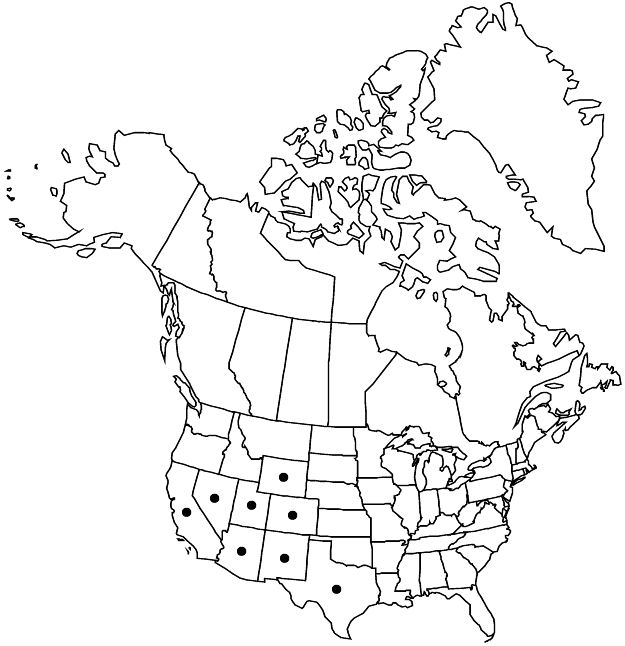Philadelphus microphyllus
Mem. Amer. Acad. Arts, n. s. 4: 54. 1849.
Shrubs, 5–12 (–20) dm. Stems copper to reddish-brown, stiffly to loosely branched, appressed villous-sericeous, ± strigose, hairs often red-gland based, or glabrous; epidermis soon or tardily deciduous exposing cortex and striate bundle caps; bark grayish; internodes (0.1–) 1–2.5 (–6) cm; short-shoot spurs not present; axillary buds hidden in pouches. Leaves: petiole 1–2 (–4) mm; blade greenish or whitish abaxially, green adaxially, linear-lanceolate, narrowly ovate to ovate, (0.5–) 0.8–3 (–5.5) × (0.2–) 0.3–1.3 (–3.3) cm, herbaceous to coriaceous, margins usually entire, rarely sparsely serrulate, plane or revolute upon drying, abaxial surface short sericeous-strigose, or sericeous-villous with longer hairs, or with ascending to erect hairs, sometimes with dense to moderate understory of slender curled hairs, adaxial surface glabrous, glabrate, ± sericeous-strigose, villous, or with erect hairs. Inflorescences usually solitary flowers, sometimes 3–5-flowered cymes. Pedicels 0.5–3 mm. Flowers: hypanthium glabrous, sericeous-strigose basally or throughout, or weakly to densely villous to densely lanate with mixed strigose and villous vestiture, with understory of slender curled hairs; sepals ovate to lanceolate, (2.5–) 4–8.5 (–10) × (2.5–) 3–4.3 (–5) mm, apex acute to acuminate-caudate, abaxial surface glabrous, sericeous-strigose, or weakly to densely villous to densely lanate with mixed strigose and villous vestiture, with understory of slender curled hairs, adaxial surface glabrous except villous along distal margins; petals white [marked purple near base], oblong-obovate to broadly ovate, (5.8–) 7–16 (–21) × (5.3–) 6–11 (–15) mm, margins entire or erose-undulate, apex ± acute, rounded, or notched; stamens 26–64; filaments often connivent-connate in irregular clusters in proximal 0.5–4 mm, 1.8–8 mm, of unequal length, glabrous; anthers yellowish, 0.7–1.2 mm; styles 4, connate proximally, cylindric, 2.5–5.5 (–7) mm, lobes sometimes connate proximally in pairs, 0.5–2.5 mm; stigmatic surfaces extending from adaxial lobes onto abaxial lobes and down to cylindric style. Capsules oblong-globose or globose-turbinate, (3.6–) 5–8 (–9.5) × (3.5–) 4–7 (–9.5) mm, sepals persisting at equator or more distally, capsule distal surface often impressed in 4 (–8) radiating lines. Seeds short caudate distally, 1.5–2.5 mm.
Distribution

Ariz., Calif., Colo., N.Mex., Nev., Tex., Utah, Wyo., Mexico
Discussion
Varieties 5 (4 in the flora).
Within Philadelphus microphyllus as treated here, P. A. Rydberg (1905) recognized nine species, C. L. Hitchcock (1943) one species with eight subspecies, and Hu S. Y. (1954–1956) 11 species and four varieties, based on vestiture, leaf size and shape, and floral differences. Four varieties are recognized here within the flora area, with a fifth restricted to Mexico and without the needed varietal combination.
Two characters are particularly important in distinguishing the varieties of Philadelphus microphyllus: adaxial leaf blade cuticle thickness and vestiture. Adaxial leaf blade cuticles can be thin and papillate, closely reflecting the adaxial epidermis cells (as seen at 30–40\x) or can be thick and smooth. Leaves with thin cuticles dry brown due to brownish granules developing in the epidermis; those with thick cuticles dry gray-green, olive green, or yellowish green without granules in the epidermis cells. Sometimes both types occur in a leaf in either a tight or bold mosaic pattern or the leaf blade may be papillate and brown only along its margins.
Vestiture is mostly sericeous-strigose on leaves, stems, hypanthia, and sepals. The appressed hairs can be slender, short or long (0.2–1.5 mm), appressed, loosely appressed, ascending, or erect. The larger hairs have slender bases that allow them to be strictly appressed, but in some taxa, the base (upon drying) lifts and twists the hair upward, leaving the hairs oriented in many different directions; we refer to this condition as chaotic vestiture. In more densely vestitured plants, very slender, elongate, wavy-curved hairs form an understory beneath the more or less dense sericeous-strigose vestiture.
Selected References
None.
Lower Taxa
Key
| 1 | Hypanthia and sepal abaxial surfaces glabrous or sparsely to moderately sericeous, hairs not obscuring epidermis. | > 2 |
| 2 | Leaf blade adaxial surfaces sparsely sericeous-strigose with appressed or slightly ascending slender hairs; leaf blade margins entire; inflorescences 1(–3)-flowered; capsules 4.4–6 mm; w United States, including se Arizona and sw New Mexico. | Philadelphus microphyllus var. microphyllus |
| 2 | Leaf blade adaxial surfaces sparsely to moderately strigose-sericeous with appressed or loosely appressed thick hairs mixed with erect hairs, or all hairs erect; leaf blade margins usually entire, on larger leaf blades sometimes sparsely serrulate; inflorescences 1–3(–5)-flowered; capsules 5–8 mm; mountains of se Arizona, sw New Mexico. | Philadelphus microphyllus var. madrensis |
| 1 | Hypanthia and sepal abaxial surfaces moderately to densely sericeous-strigose or villous-lanate, often with understory of thinner ± curled hairs usually completely obscuring epidermis except sometimes in fruit. | > 3 |
| 3 | Leaf blade abaxial surfaces with hairs usually erect and chaotically oriented, sometimes appressed; mountains of sc New Mexico. | Philadelphus microphyllus var. argyrocalyx |
| 3 | Leaf blade abaxial surfaces with hairs appressed or loosely appressed; w United States, but mostly not sc New Mexico. | > 4 |
| 4 | Leaf blade adaxial cuticles forming mosaic of thin, papillate areas and thick, smooth areas, adaxial surfaces drying mosaic of brown and yellowish gray-green, or cuticles uniformly thin, papillate, adaxial surfaces drying dark brown. | Philadelphus microphyllus var. microphyllus |
| 4 | Leaf blade adaxial cuticles thick, smooth, or papillate near margins, adaxial surfaces drying olive green or yellowish gray-green. | > 5 |
| 5 | Leaf blade abaxial surfaces with appressed or loosely appressed hairs 0.5–1.2 mm; adaxial surfaces with only appressed or slightly ascending hairs 0.3–0.7 mm; w Texas to sw Arizona. | Philadelphus microphyllus var. microphyllus |
| 5 | Leaf blade abaxial surfaces with appressed or loosely appressed hairs 0.3–0.7 mm, adaxial surfaces with appressed hairs 0.1–0.6 mm and often with shorter erect hairs, 0.1–0.3 mm; California, adjacent w Nevada. | Philadelphus microphyllus var. pumilus |
"connate" is not a number. "distinct" is not a number."dm" is not declared as a valid unit of measurement for this property.